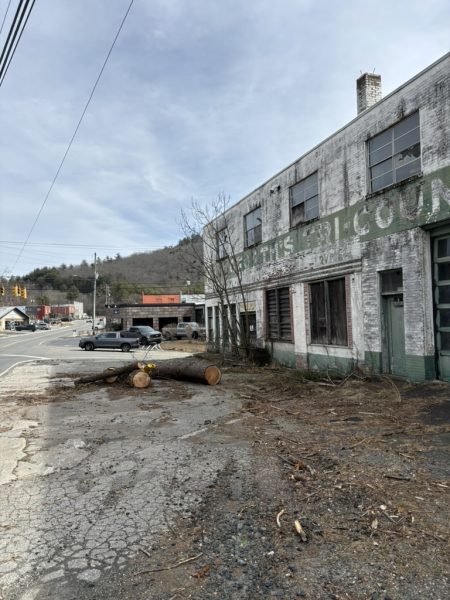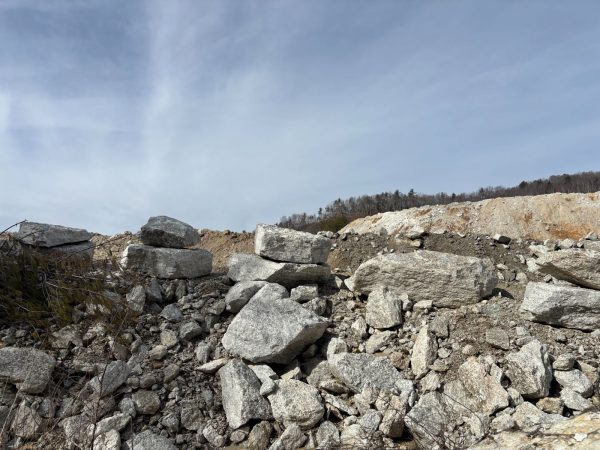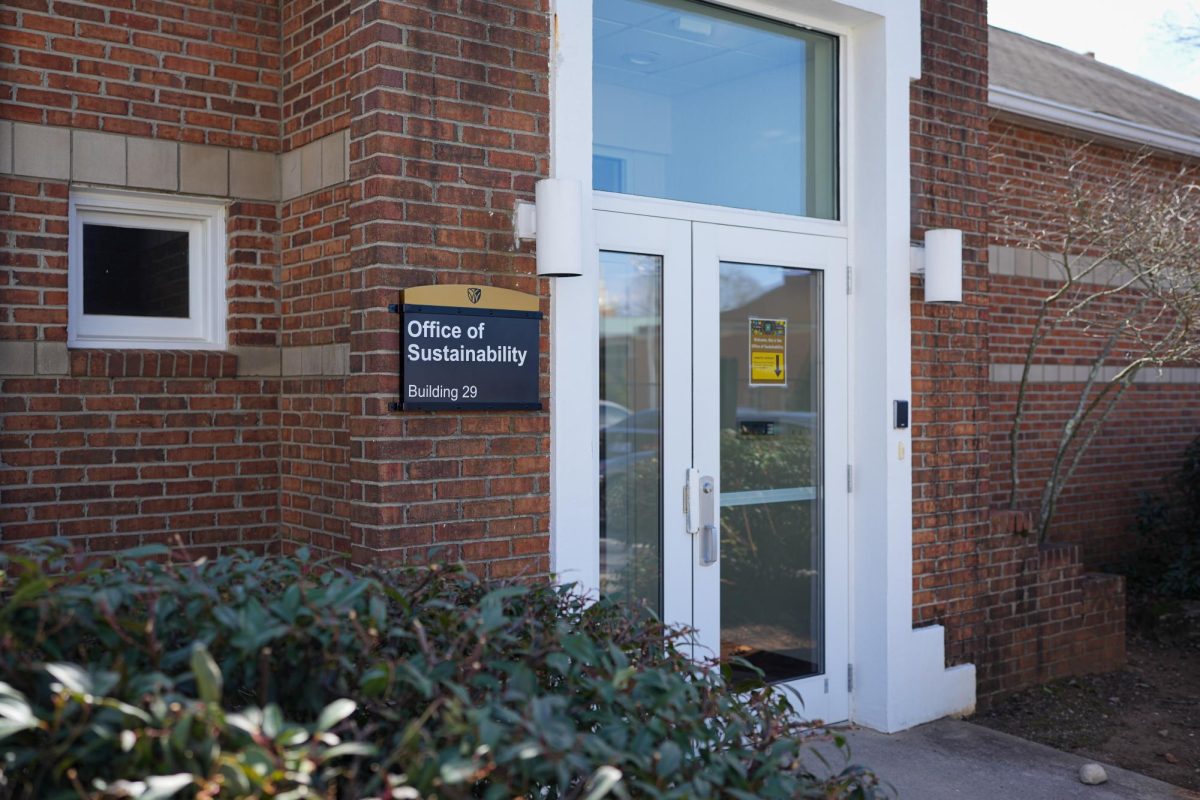Tucked into the valleys of the Blue Ridge Mountains, a mine in Spruce Pine, N.C. closed for several weeks following the destruction caused by Hurricane Helene, in late Sept. 2024.
Spruce Pine is a town of fewer than 2,500 residents, but the mine plays a crucial role across the globe.
The torrential rainstorm flooded roads and cut power to a uniquely vital site for one of the world’s most valuable industries: semiconductors. Spruce Pine is home to a group of rare quarries that produce 90% of the world’s high-purity quartz (HPQ) — a crucial material used to enable the molten silicon base of chip wafers.
“People have told me that I work at the most important mine in the world,” Rick Singleton, Spruce Pine’s director of operations at Sibelco North America, the primary administrator of these mines, said.
Simply put, anything that has to think — from smartphones to cars, or the computer you read Old Gold & Black stories on — must have a chip. Everything that has a chip has a piece of this small Appalachian town inside it from the sand it provides.
Sibelco is the largest employer in the three counties in which it operates — Mitchell, Avery and Yancey — and has devoted significant capital to revitalizing these communities following the storm. We visited Sibelco’s Schoolhouse mine, the primary plot for HPQ extraction, to better understand the company’s operations and the town’s journey to recovery. A consistent theme emerged: the mine’s impact on the world is comparable to its magnitude for the community.
What a mine can mean for a community
Singleton, a native and second-generation miner in Spruce Pine, advocates for Sibelco’s commitment to the area in as many ways as possible.
“We try to buy locally for everything that we can,” Singleton said. “There is a large number of local businesses that are provided support by Sibelco — even if it means additional costs.”
Beyond the company’s purchases for operations, the mines inject capital into the community in many, often indirect, ways. The plant’s presence generates tax revenue that can fund public programs, such as schools and emergency services, and increases the demand for housing and retail markets. Sibelco brings residents to the town, where they live, spend and consume. That sense of life and activity is needed for a community to survive.
“The mines are the lifeblood of the county,” Ryan Byrd, an employee of the Lakeview Mercantile and Gardens store in downtown Spruce Pine, said. “As far as multinational corporations go, they help a lot — they have donated quite a bit of money to the community.”

In 2024, the company established the Sibelco Spruce Pine Foundation, aiming to have a “lasting impact” on infrastructure, housing and businesses in the community’s recovery process. With recurring donations, Sibelco will directly aid in home building and equipping the community with tools of resilience for natural disasters, protecting one of the business’s core assets that company CEO Hilmar Rode describes they are “dedicated” to.
A sustainable effort in an environmentally threatening industry
At its core, the practice of scraping the Earth for minerals is not sustainable. From deforestation and habitat destruction to the large amount of waste and dust that can infiltrate nearby ecosystems, the immediate harms associated with blasting rock are increasingly well-known, particularly in North Carolina.
Long before the California 49ers moved west to strike gold, North Carolina was the primary locale for the American gold rush. For decades, gold mining was the second-largest provider of employment in the state behind farming and was the source of a considerable flock of Europeans and out-of-staters to the South. Mining isn’t new in the Tar Heel State, and this rich history has left behind hundreds of abandoned sites of scarred Earth that have forced the state to carefully regulate the industry.
Key statutes and provisions like the Mining Act of 1971 and Title 15A of the North Carolina Administrative Code require greater strength of permits, reclamation plans after land use, environmental protections and local and federal compliance. Sibelco considers this legal pressure and employs a careful, multistep conservation framework each day in its operations.
“We do seismic readings before mining, drone monitoring and test water quality,” Singleton shared. “We follow some very stringent environmental rules. The less you hear about us in the news is a good thing.”
Singleton also objects to many of the common criticisms of the mining industry and justifies Sibelco’s effort with the scope of Spruce Pine’s impact.
“There’s a saying in mining: if you can’t grow it, you have to mine it… and that goes for everything we see in everyday life,” Singleton recalled. “No matter what people say, mining is needed.”
The energy transition is one of those things — every solar panel that absorbs rays and every wind turbine blade that rotates needs HPQ to run. Photovoltaic cells, the building blocks for solar panels, require the mineral in their construction, as do the electronic systems and sensors that support turbine operation. Similarly, HPQ is an integral component to the energy storage systems that help manage these intermittent sources of power. While involved in a cautious business environment, Sibelco commends its finished product as a tool whose benefit outweighs the ecological damage that it already works to mitigate.
Hurricane Helene and the Path Forward

The North Carolina Department of Commerce designated Mitchell County (the home of Spruce Pine) with a Tier 1 development level in 2025 as one of the most economically distressed counties in the state, based on factors like average unemployment rate and median household income. Additionally, while North Carolina has claimed to be a top-five state in terms of population growth since the pandemic, Mitchell County experienced a 1.2% shrink in residents between 2020 and 2023.
“The economy is already struggling here and the flooding of the mines does not help,” April Bowen, a waitress at Spruce Pine’s 50s Classic Diner, commented. “It will probably take over a decade to get back to where we were.”
In addition to a $1 million hurricane relief donation, Sibelco distributed tons of its mined byproducts, sand and gravel to help slow down the flooding during the aftermath of the storm. It was one effort that brought the community a step closer to reopening the businesses, roads and utilities essential to its life.
Helene was not the first instance of a shock to Spruce Pine. In Nov. 2008, the plant fell victim to a fire that inflicted significant damage, causing miles-wide evacuations from homes and cutting off the mines’ HPQ supply. While Spruce Pine’s mine’s position far upstream in the value chain protects them from sudden demand spikes, their significant market share makes any extended absence disruptive.
Sibelco currently estimates it holds a quartz reserve that will supply global demand for the next 110 years — which is a long time, but not that long. This finite surplus, coupled with the insatiable human desire for semiconductors and solar generation (which both reached record highs in 2024, with demand expected to continue rising), pokes at Spruce Pine’s ability to adjust sustainably.
“As chips become smaller and more refined, the need for Spruce Pine HPQ builds,” Singleton assessed. “More refined chips require purer quartz sand.”
Hurricane Helene accentuated a single point of failure in the global semiconductor supply chain — and it is located only two hours from our Wake Forest campus. A sustainable future within this critical industry will require a delicate balance between the growing human need for technology and respect for the natural world.











